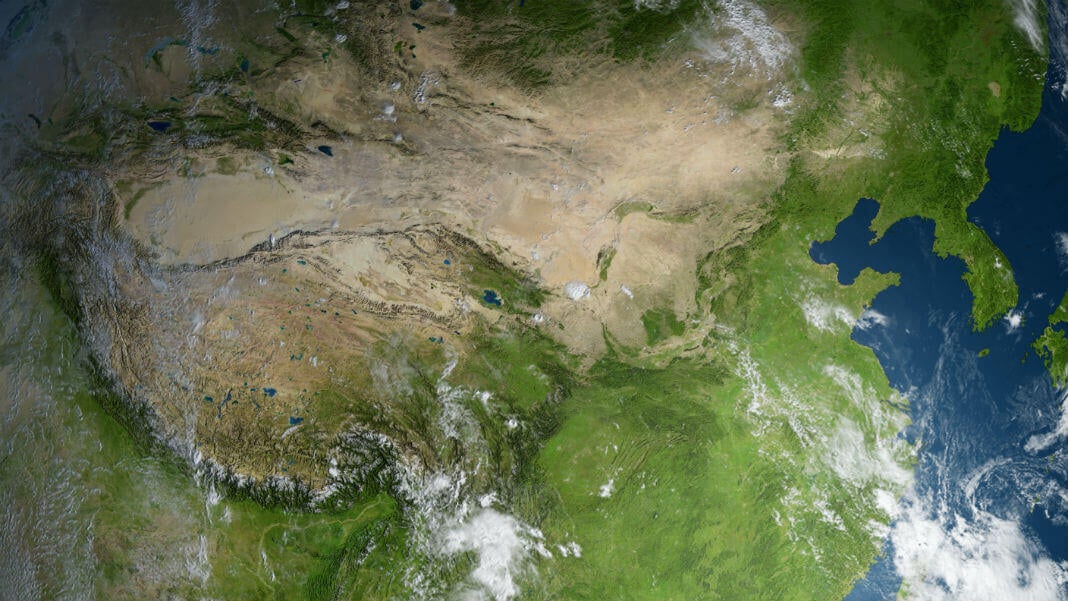- Get link
- X
- Other Apps

Artificial rain - that's what will help China to moisten the area in three of Spain. In any case, this is China's latest project to manipulate the weather. The system will include solid fuel burners, drones, aircraft, artillery and a network of meteorological probes that will explore the vast expanses of the Indian Ocean. The goal is to create a distributed system capable of combating climate change and increasing the amount of precipitation in the region by ten billion cubic meters, or about 7% of the annual water consumption in China.
Of course, the project - and artificial rain technology as a whole - has its own critics and opponents. Some refer to the untested nature of technology, others are afraid that the project will increase international tensions in an unstable region.
Scaling and satellites
China's new project provides for the deployment of thousands of cameras burning solid fuels on the Tibetan plateau. Upon combustion, the chambers will produce silver iodide. Iodide acts as a condensate for water molecules in the air. The more molecules of water collected around the molecules of iodide, the harder they become and fall to the ground, like snow or rain. This process is known as the sowing of clouds.
Every year, the wet Muson winds from the Indian Ocean sweep across the Himalayan mountains to the north. Monsoon activity data gathered from 30 meteorological satellites in real time will ensure that fuel combustion coincides with optimum conditions for binding of water-containing fog mists to iodide that will be released during combustion, thus increasing rain and snowfall. Combustion networks will help drones, cloud sowing, airplanes and even artillery to maximize its effect.
SCMP, referring to an unnamed scientist working on the project, reports that 500 combustion chambers have already been built, with the initial results being very promising. One combustion chamber costs about 8000 dollars. Upon completion, "tens of thousands of cameras" will be located on the Tibetan plateau. The goal is to increase the amount of precipitation in an area of about 1.6 million square kilometers. This is the largest project in the world to create artificial rain.
Climate change is the main reason why China takes up this project. According to SCMP, climate models predict that in this area there will be severe droughts and temperature rises that will reduce regional precipitation. This poses significant risks for China and its neighbors, as the Tibetan plateau is an important source of water in the region.
The climate is under control
China is developing technological ways of manipulating weather, and is also looking for ways to collect or distribute fresh water for many years. In 2016, the project "Heavenly River" was proposed. Its goal is to increase the water supply of the northern dry regions of China through the evaporation of water and the use of northern air streams to transport evaporation to the north.
Closer to the ground, manipulation of weather can be a way to deal with the high levels of pollution found in many major cities in China. The project involves the consolidation of large sprinkler systems on the outer sides of skyscrapers. Spraying the air with water, it would be possible (probably) to bind toxins and gases with water, thereby reducing the volume of toxic smog.
China is by no means the only country that develops weather management projects. In 2016, 56 countries had such programs, compared with 42 countries in 2011.
The idea of weather manipulation exists for a long time and was even used during the Vietnam War. Operation Popeye, for example, aimed to increase the amount of precipitation in the monsoon season, so that the terrain became dirty and difficult for enemy fighters. The unofficial slogan of the Air Force pilots who carried out the mission was "do the dirt, not the war."
Take the water and make it rain
The final approval of the project by the Chinese authorities has not yet been made, but has already caused concern in other regions of China, as well as in neighboring countries. Manipulation of the weather to get more rainfall over the Tibetan plains can lead to a decrease in precipitation elsewhere. Tibet is often called the water tower of Asia, which feeds the rivers Brahmaputra, Mekong, Yangtze and Yellow. Can an increase in precipitation in a certain geographic region lead to a decrease in precipitation in other places? This question is still unanswered, and it is unclear what to do with it.
Critics also note a completely untested theory of weather manipulation.
Ma Weiqiang, a scientist from the Institute for Studies of the Tibetan Plateau of the Chinese Academy of Sciences, called the experiment "unprecedented", but doubts that the combustion chambers will somehow affect the weather. In particular, he skeptically estimates the amount of precipitation that they can produce. The climate system is huge. Any attempts by people to intervene may look faded.
Others are optimistic about the potential of the project.
"Even a 10 percent increase in rainfall or snow can justify the costs," said Bart Geerts, a professor of atmospheric science from the University of Wyoming.
The article is based on materials .
- Get link
- X
- Other Apps
Comments
Post a Comment